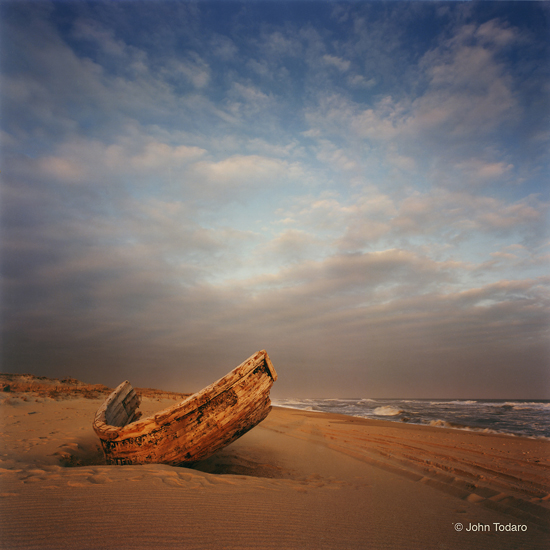A few years ago, I paddled up to this dinghy while exploring the wetlands of Bullhead Bay in my sea kayak. The bay is a good place for this sort of exploration and much of the land from there up to Scallop Pond has been preserved by the Town of Southampton and The Nature Conservancy. The picture was taken in November–a time of the year when you pretty much have the estuary to yourself. In this setting, the boat seemed appropriately named.
The picture was captured on transparency film using a Contax G2 with a 90mm lens. In order to do this, some preparations were needed.
Once I was positioned close to the dinghy, I inflated a paddle float and placed it on my paddle. Holding the paddle behind my back, I braced myself against the water. By using a paddle float in this fashion, you create a relatively stable outrigger from which you can then carefully take some photographs.
The 90mm is a fast lens, and this situation is a good example of when you might prefer a fast prime to a zoom. A slower zoom would’ve been unusable at ISO 100, and also would’ve been very difficult to stabilize while trying to shoot one-handed.
Because I was willing to take an expensive camera out onto the bay without any waterproof housing, I was taking some chances. To minimize the risk of water damage, I sealed my equipment in a water-tight dry bag which I then sat on top of my lap. I also stashed a bottle of fresh water in my cockpit so that I could wash my hands before handling the camera. The deflated paddle float was bungeed to the boat. After taking a few pictures the camera went back into the dry bag and I continued on my way.
Attempting this procedure in rougher surf requires a bit more attention to bracing properly, but I’ve done it successfully several times.
The picture at the link below was taken near Cedar Point with the same camera and the same film. On that occasion, I was bracing myself against a fast moving tidal rip in thirty feet of water:
http://johntodaro.com/buoy-6-profile.htm
The red dinghy up above required a bit of post-processing. The first step was to make a high-res scan on my Epson V 700. After a bit of clean-up work I settled on a cropped square image which made it very compatible with a number of my full-frame images from the Hasselblad. One thing I’ve noticed about scans from Provia F is that the intensely blue bias of the film often benefits from a bit of desaturation in Photoshop.




























